Learning Materials
The following is a list of original contents that the Japanese Language Education Division, Center for Global Education has developed so far.
Level: ★=Beginner, ★★=Elementary, ★★★=Intermediate, ★★★★=Advanced
On-Demand Japanese Learning Materials
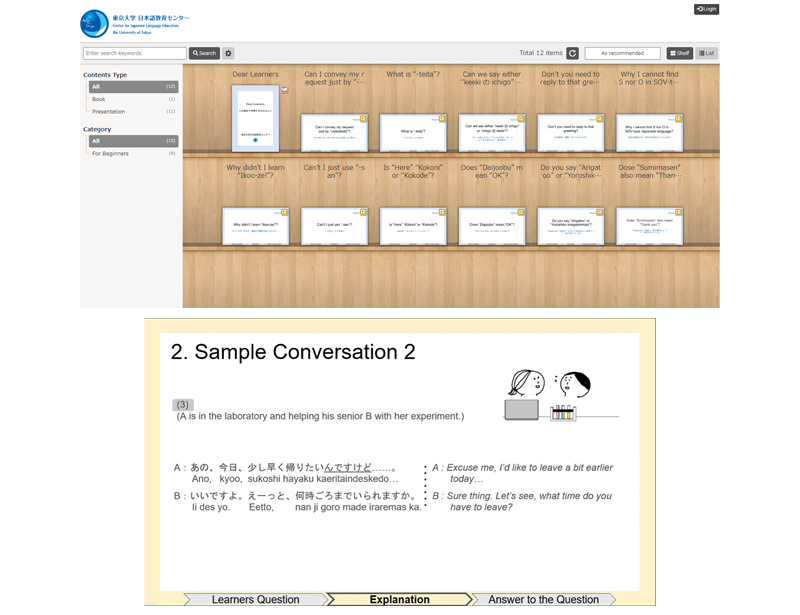
In these learning materials, we have compiled short discussions on questions about the Japanese language as brought up by our international students at UTokyo. They include both (1) questions that arise as the learner starts learning Japanese and (2) questions that arise as the learner uses Japanese which they have learned in daily life situations. All discussions are in English, and a Romanized version of the dialogue is given alongside the Japanese phrases. You can view any of the content freely in any order according to your interests.
Introduction to Japanese Language Study

It is very effective to understand the grammatical characteristics of Japanese from a linguistic point of view and to keep them in mind while studying Japanese. We will help you with this by organizing such points on this site. This text is written for beginners, but it is also useful for intermediate and advanced learners.
Hiragana
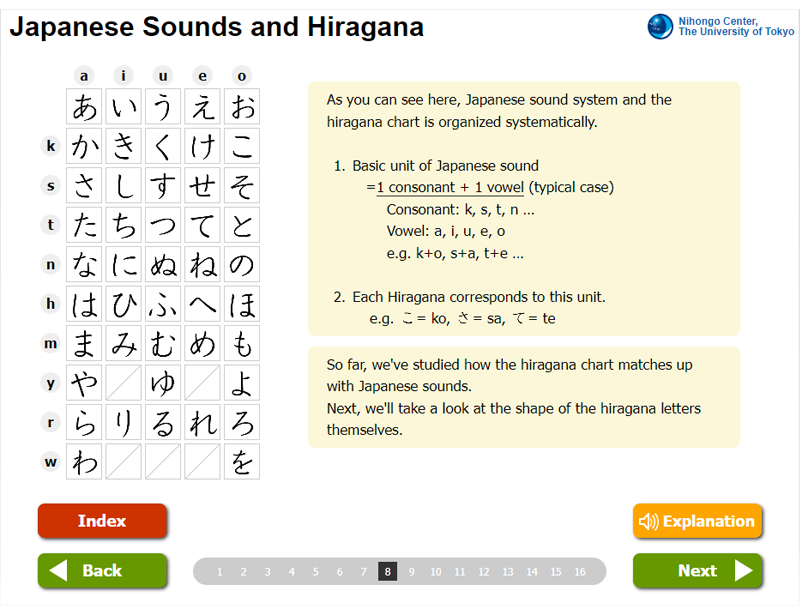
The Japanese language has three writing systems: hiragana, katakana, and kanji. Of these three, hiragana is the most basic. We’ll start by taking a look at the hiragana system.
Our hiragana material consists of three parts: Intro, Main, Task.
You can switch on the tab.
| Intro | If you are learning hiragana for the first time, we strongly recommend studying this part first. |
|---|---|
| Main | You can learn hiragana one line at a time. We recommend studying in the index order, but Special Characters 1 to 6 can also be studied afterwards. |
| Task | Five tasks (Checking Stroke Order, Completing the Hiragana Chart with Drag and Drop, and others) are included. Please work on them to establish your knowledge and check your memory. |
Katakana
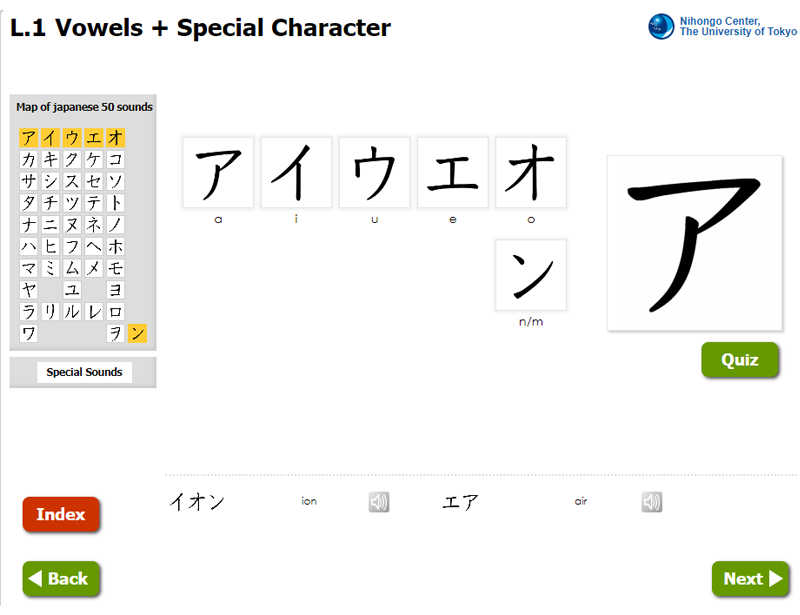
Katakana is another writing system that is essentially based on the same phonetic system as hiragana. It is mainly used to transcribe foreign words.
Our katakana material consists of two parts: Main, Task.You can switch on the tab.
| Main | You can learn katakana one line at a time. |
|---|---|
| Task | Five tasks (Checking Stroke Order, Completing the Katakana Chart with Drag and Drop, and others) are included. Please work on them to establish your knowledge and check your memory. |
Verb Conjugation
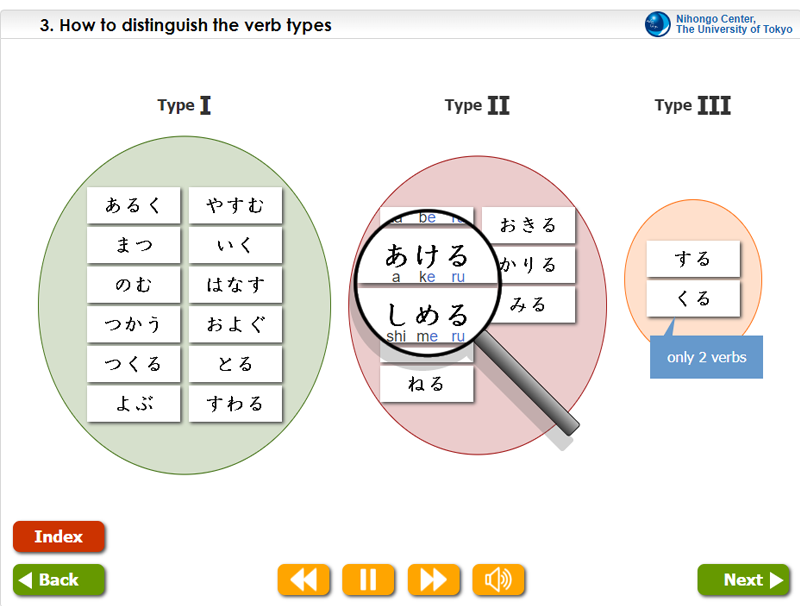
In this material, you will learn how to conjugate Japanese verbs. By modifying the ending part of any Japanese verb, you will be able to conjugate it into its various forms. Some of the main forms of verbs are the dictionary form, -masu form, -nai form, -ta form, and -te form. We will learn all about these forms together. By gaining a more holistic understanding of the systems and rules in the Japanese language, you can easily master conjugation and learn to conjugate any verb into any form.
Kanji
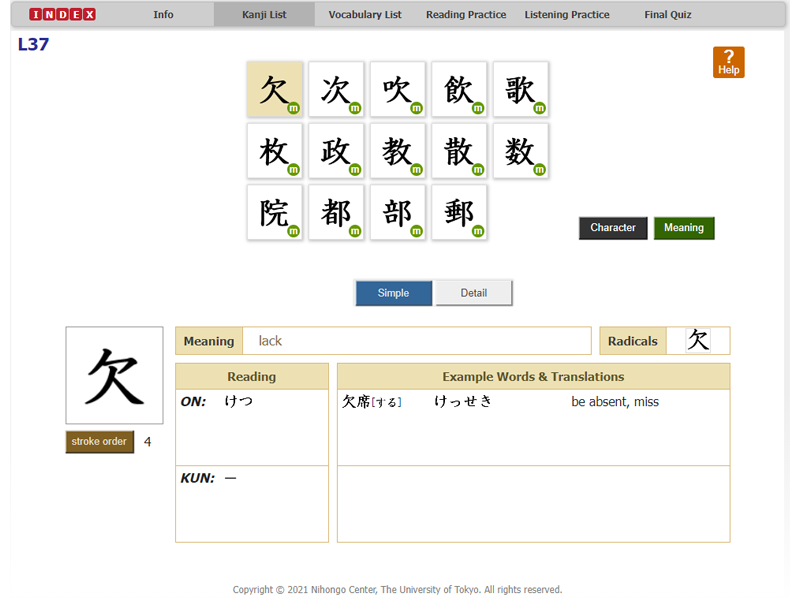
Kanji Step Up Beginning to Intermediate 500 Kanji
These materials are for the study of roughly 500 kanji grouped in various ways, such as by character shape (radicals, identified by similar shapes), meaning, and function (situation, usages, such as verbs, and affixation). Each lesson consists of 10 to 15 characters and has 5 parts.